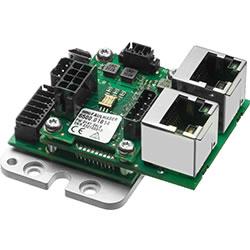CMTS 2025 Executive Perspectives Panel to Weigh in on Future of Additive Manufacturing
That’s the insight a keynote panel of additive manufacturing – also known as 3D printing – professionals will share at the Canadian Manufacturing Technology Show (CMTS) 2025, Canada's national industry event taking place at the Toronto Congress Centre from Sept. 29 to Oct. 2.
Toronto, ON, September 16, 2025 - A new era of additive manufacturing has arrived in Canada and it's having a transformative effect on all sectors of the manufacturing industry.
That's the insight a keynote panel of additive manufacturing - also known as 3D printing - professionals will share at the Canadian Manufacturing Technology Show (CMTS) 2025, Canada's national industry event taking place at the Toronto Congress Centre from Sept. 29 to Oct. 2.
The panel session - called From Disruption to Advantage: Scaling Additive for Real-World Impact (Sept. 30, 8:30 a.m.) - will feature speakers Andrew Carter, Manufacturing Process and Engineering Manager at Stratasys Direct, Ante Lausic, Lead Process Engineer - Metal AM at General Motors, Khaled Samk, Additive Manufacturing Metallurgist at Exco Engineering, Garrett Harmon, Application Engineering Project Manager at Caracol AM (3D Printing Canada), and Mihaela Vlasea, Associate Professor, Multi-scale Additive Manufacturing Laboratory at the University of Waterloo.
The biggest transformational shift? No longer is additive manufacturing just being used for prototyping, but its role in end-use production is growing exponentially, according to Carter.
"This new industrialization of additive manufacturing isn't just a simple shift from one-off prototypes to production parts - it's a fundamental change in how the technology is viewed and used," Carter said. "In the past, additive manufacturing was often seen as a flexible, do-it-all tool, whereas this new era is defined by a strategic, application-centric approach."
Still, Carter cautioned that 3D printing shouldn't be seen a replacement for conventional manufacturing. "The most successful companies aren't using additive manufacturing as a substitute, but rather, as a complement to traditional techniques and a strategic asset to solve specific, complex challenges," he said. As examples, he cited using 3D printing to provide a near-net-shape component to reduce waste in Computer Numerical Control (CNC) milling, or for vapor smoothing and plating to enhance part quality.
Technology advancements
Samk emphasized that the popularity of 3D printing is being boosted by technological and equipment advancements. For example, "improvements in laser technology are bridging the gap between subtractive and additive manufacturing and enabling companies to produce larger parts more quickly and at competitive costs and lead times," he said.
"Laser beam shaping enables faster printing of metals with fewer defects, allows printing of materials that were historically problematic due to solidification cracking, and opens up opportunities for in-situ heat treatment of printed parts," Samk explained. "Modern 3D printers now feature larger build volumes, multiple lasers, higher laser power, and beam-shaping/defocusing capabilities. Additionally, design strategies such as hollowing, latticing, and spatially controlled porosity have further sped up the process."
Lausic added that, as additive manufacturing becomes more mainstream, businesses will no longer question if it works, but rather, must ask if it makes sense to do and if it adds value compared to conventional techniques such as casting, molding, stamping, and other conventional methods.
In the automotive sector, he predicts that 3D printing of tooling and low volumes will be "the bread and butter" as manufacturers work to expand to mid-volume landscapes and reduce finished cost per part.
As technological advancements accelerate, Vlasea shared that there is a pressing need to ensure Canadian manufacturers have access to high-value technologies to de-risk initial research and development before being able to scale up. "Government bodies, academic institutions and R&D labs are continuously looking for more agile ways to engage with industry stakeholders to address growth in this sector," she said.
Supply chain protection
No matter how it's used, the panelists will share that additive manufacturing provides a powerful solution to today's supply chain vulnerabilities.
"By enabling on-demand production and digital inventories, additive manufacturing significantly reduces a manufacturer's reliance on distant, overseas suppliers and mitigates risks or logistical disruptions," Carter said. "This capability facilitates near-shoring, shortening supply chains and drastically improves responsiveness to market shifts. It allows manufacturers to pivot quickly to new designs, respond to unexpected demand spikes, and maintain business continuity in an evolving global trade landscape."
About CMTS 2025
Featuring the latest equipment and technology advancements in machine tools, tooling, metalworking, automation, robotics, additive manufacturing, and digital transformation, CMTS 2025 is expected to draw more than 10,000 professionals in all areas of the industry, including automotive, aerospace, energy, government, commercial, industrial, and oil and gas. The show will present 750+ suppliers and OEMs, three major technology showcases and a national cross-section of decision-makers shaping the future of Canadian manufacturing.
CMTS 2025 is presented by non-profit SME, with strategic event partners including Canadian Machine Tool Distributors Association, Canadian Tooling & Machining Association, Automotive Parts Manufacturers' Association, Canadian Manufacturers & Exporters, CWB-EWI, and NGen.
Industry supporters include AI4Manufacturing Canada, Automate Canada, Anada-ASEAN Business Council, Canadian Association of Moldmakers, Canada Makes, Dental Industry Association of Canada, Export Development Canada, Italian Trade Agency, Machines Italia, Ontario Centre of Innovation and the VR/AR Association.
For more information and to register for the event, visit www.cmts.ca.
Featured Product

MOTION CONTROLLERS FOR MINIATURE DRIVES AND MICRODRIVES
FAULHABER has added another extremely compact Motion Controller without housing to its product range. The new Motion Controller is ideal for integration in equipment manufacturing and medical technology applications. With 36 V and 3 A (peak current 9 A), it covers the power range up to approx. 100 W and is suitable for DC-motors with encoder, brushless drives or linear motors.
